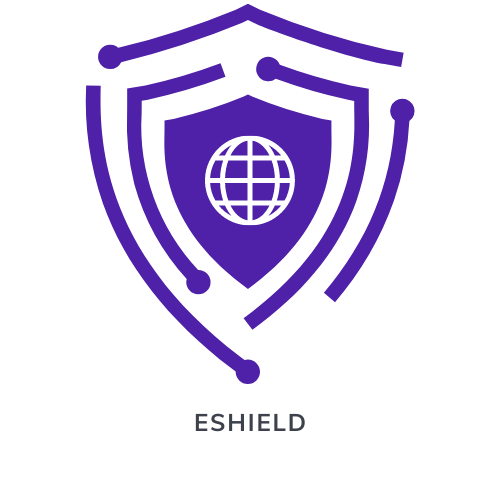Protecting your website from cyber threats is now more important than ever. Do you know about the first defense that can protect your online space?
A Web Application Firewall (WAF) is a key security tool. It keeps your website safe from cyber attacks. Eshielditservices suggests using a WAF for website security.

A WAF is like a shield between your site and threats. It checks incoming traffic to stop attacks like SQL injection and cross-site scripting (XSS).
Key Takeaways
- Understanding the role of a WAF in website security
- Recognizing the importance of WAF in protecting against cyber threats
- Learning how a WAF filters incoming traffic to prevent attacks
- Discovering the benefits of implementing a WAF for your website
- Enhancing your website’s security with Eshielditservices’ WAF solutions
Understanding Web Application Firewalls and Their Importance
Cyberattacks are getting smarter, making web application firewalls (WAFs) more vital. Cybersecurity protection gets a big boost from WAFs. They act as a shield between web apps and threats.
Definition and Core Functions of a WAF
A Web Application Firewall (WAF) watches over web app traffic. It blocks bad HTTP traffic. Eshielditservices provides top-notch WAFs for UAE businesses, boosting application security.
- Monitoring HTTP traffic
- Filtering and blocking malicious requests
- Protecting against SQL injection and XSS
How WAFs Differ from Traditional Firewalls
Traditional firewalls control network traffic. But WAFs are made for web apps. They catch and stop attacks that target web app weaknesses.

WAFs fit web apps perfectly, making them key in fighting cyber threats. Knowing how WAFs work helps businesses keep their online stuff safe.
Common Web-Based Attacks a Web Application Firewall Protects Against
As cyber threats grow, it’s key to know what a WAF fights against. A WAF keeps web apps safe from many attacks. This ensures data stays secure and intact.
SQL Injection Attacks
SQL injection attacks try to get into databases with bad SQL code. Eshielditservices WAFs stop these attacks.
Detection and Prevention Mechanisms
WAFs watch for odd database queries. They block bad SQL code from harming your data.
Cross-Site Scripting (XSS)
XSS attacks sneak bad scripts into trusted sites. Effective WAF configuration stops XSS attacks.
Protection Strategies
WAFs check user input and encode data. This stops bad scripts from running.
Cross-Site Request Forgery (CSRF)
CSRF tricks users into doing things they didn’t mean to. A good WAF stops these by checking requests.
DDoS Attacks and Other Common Threats
DDoS attacks flood sites with traffic, making them down. A WAF filters out bad traffic. It also fights malware and exploits, like Eshielditservices.

Types of Web Application Firewalls
It’s key for businesses to know about Web Application Firewalls (WAFs) for better website security. WAFs protect against cyber threats. The right WAF depends on the business size, web app complexity, and security needs.
Network-Based WAFs
Network-Based WAFs are hardware solutions placed between the web app and the internet. They offer high performance and scalability, great for big organizations. Benefits include:
- Advanced threat detection
- Easy to set up and manage
- Scalable for growing security needs
But, they can be expensive and need a big upfront investment.
Host-Based WAFs
Host-Based WAFs are software solutions on the server hosting the web app. They offer granular control over security settings and are more affordable. Benefits include:
- Customizable for specific security needs
- Lower costs than hardware-based solutions
- Easier to integrate with existing security
But, they might use up server resources, affecting web app performance.
Cloud-Based WAFs
Cloud-Based WAFs are cloud services, providing a scalable and cost-effective option. They are easy to deploy and manage. Benefits include:
- Quick setup with low upfront costs
- Scalable for large traffic volumes
- Regular updates and maintenance by the provider
Eshielditservices offers various WAF solutions for UAE businesses. It’s important to think about scalability, performance, and cost when choosing a WAF. Also, consider your organization’s specific security needs.
How to Implement a Web Application Firewall
Cyber threats are getting more complex, making a strong WAF key to protect your online stuff. A good plan for setting up your WAF helps block many cyber threats. This boosts your cybersecurity protection a lot.
Step 1: Assessing Your Website Security Needs
First, you need to check your website’s security needs. Look for weak spots, the data you handle, and common threats. Eshielditservices says doing a detailed risk check is important to figure out how much security you need.
Step 2: Choosing the Right WAF Solution
Picking the right WAF is vital for strong application security. Think about your website’s size, how complex it is, and your budget.
Evaluating Vendors and Features
When picking a WAF, look for things like real-time threat detection and easy setup. “A good WAF should grow with your security needs,” says a cybersecurity pro. Make sure the vendor offers great support and keeps up with new threats.
Step 3: Deployment and Configuration
After picking a WAF, it’s time to set it up. This means making it watch and filter your web app’s traffic. Getting it right is important to block bad traffic without stopping good users.
Setting Up Protection Rules
Setting up rules is a big part of setting up your WAF. These rules tell the WAF how to handle different traffic types. It’s important to find a balance between keeping things safe and letting users in.
Step 4: Testing and Validation
After setting up your WAF, test it to see if it works. Try out different attack scenarios to make sure it blocks threats. Testing often helps find and fix any problems and keeps your WAF strong against threats.
Getting a WAF is a big step to make your web app safer. By following these steps and using experts like Eshielditservices, you can protect your site from new cyber threats.
Best Practices for WAF Management and Optimization
Optimizing a Web Application Firewall is key to stopping cyber threats. By following these best practices, UAE organizations can boost their web security. This makes their online presence safer.
Regular Updates and Patch Management
It’s vital to keep the WAF software current to fight new threats. Regular updates and patch management fix known weaknesses. This stops attackers from exploiting them. It’s important to apply updates from the WAF vendor regularly.
Monitoring and Logging
Monitoring and logging help spot security issues and understand threats. By looking at logs, teams can find patterns that show a breach or attack. This lets them act fast to protect the system.
Response Planning for Security Incidents
A response plan is key to handling security incidents. It outlines steps to take during a breach, like stopping the attack and recovering. Regular drills and updates keep the plan effective.
Measuring WAF Effectiveness and ROI
Organizations need to check how well their WAF works and its return on investment (ROI). They should track things like blocked attacks and how fast they respond. This helps improve the WAF’s setup and security.
By following these practices, UAE businesses can strengthen their web security. This helps prevent cyber threats and data breaches. Eshieldit offers tailored WAF solutions for UAE organizations, giving them strong protection and support.
Eshielditservices WAF Solutions for UAE Businesses
Eshielditservices offers top-notch WAF solutions for UAE businesses. Cyberattacks are on the rise, and UAE companies need strong security. This is to keep their online presence safe.
Overview of Eshielditservices WAF Offerings
Eshielditservices has a variety of WAF solutions for UAE businesses. Their services include advanced threat detection, real-time monitoring, and customizable security policies. These features help protect web applications from cyber threats.
Benefits for UAE Organizations
UAE organizations gain a lot from Eshielditservices’ WAF solutions. The main benefits are enhanced cybersecurity, improved compliance with rules, and reduced risk of cyberattacks. With Eshielditservices’ WAF, businesses can keep their web applications safe and running smoothly.
Implementation and Support Services
Eshielditservices offers full support for their WAF solutions. This includes expert deployment, ongoing maintenance, and 24/7 support. Their cybersecurity experts make sure WAF solutions fit each business’s security needs. This gives businesses peace of mind and lets them focus on their main work.
Choosing Eshielditservices’ WAF solutions helps UAE businesses boost their cybersecurity. It also protects their online assets from new threats.
Conclusion
A Web Application Firewall (WAF) is key for website security. It fights off many cyber threats, like SQL injection and cross-site scripting. Using a WAF is a must to keep your online space safe and sound.
WAFs are top-notch web security solutions for data breach prevention. They act as a filter, stopping bad requests from getting through. This keeps your website and data safe. Eshielditservices provides custom WAF solutions for UAE businesses, protecting them from new cyber dangers.
To boost your website security, think about getting a WAF. The right defense can greatly lower cyber attack risks. Eshielditservices is here to help, with their knowledge and support to keep your site secure.
FAQ
What is a Web Application Firewall (WAF) and how does it protect my website?
A Web Application Firewall (WAF) watches and filters traffic to your site. It keeps it safe from attacks like SQL injection and cross-site scripting (XSS). It checks traffic patterns to stop threats, keeping your site and data safe.
How does a WAF differ from a traditional firewall?
A traditional firewall guards the network edge, controlling traffic. But a WAF focuses on web apps, checking traffic at the app layer. It stops attacks that target web app vulnerabilities.
What types of attacks can a WAF protect against?
A WAF fights off attacks like SQL injection, XSS, CSRF, and DDoS. It keeps your site secure and running smoothly.
What are the different types of WAFs available?
There are network-based, host-based, and cloud-based WAFs. Network-based WAFs are hardware-based and sit at the network edge. Host-based WAFs run on the web server. Cloud-based WAFs offer scalable, flexible security as a cloud service.
How do I implement a WAF for my website?
To set up a WAF, first, assess your site’s security needs. Then, pick the right WAF solution. Deploy and configure it, and test its effectiveness. Choose a WAF that fits your security needs.
What are some best practices for managing and optimizing a WAF?
For WAF management, keep it updated and monitor it. Have a plan for security incidents. Also, measure its effectiveness and ROI. These steps ensure your WAF protects your site well.
How can Eshielditservices help with WAF implementation and support?
Eshielditservices offers WAF solutions for UAE businesses. They provide implementation and support services. They help you choose and set up a WAF that fits your security needs.
What are the benefits of using a cloud-based WAF?
Cloud-based WAFs are scalable and flexible. They’re cost-effective and easy to integrate with other security tools. They adapt to changing traffic patterns, making them a great choice.


